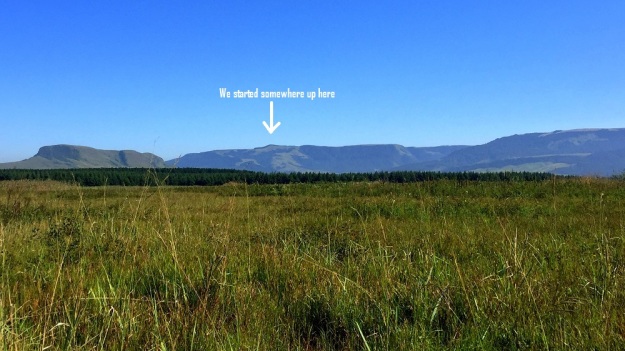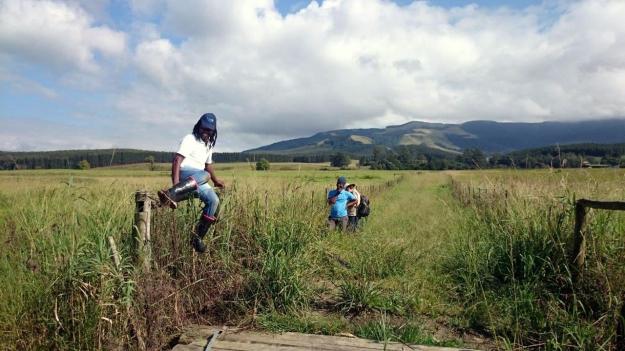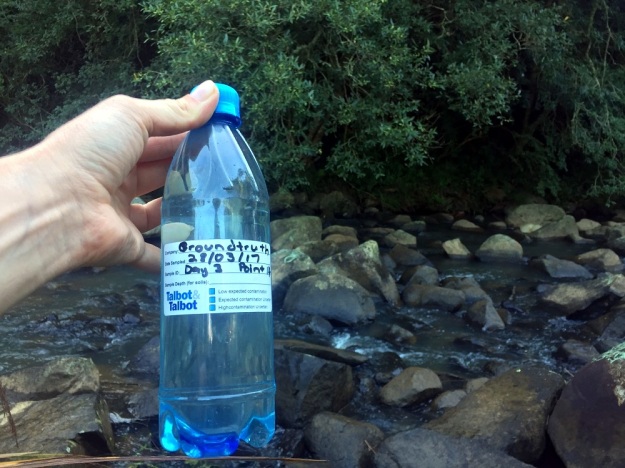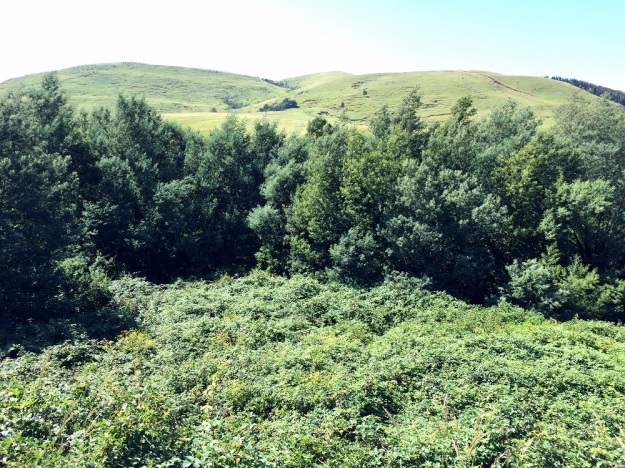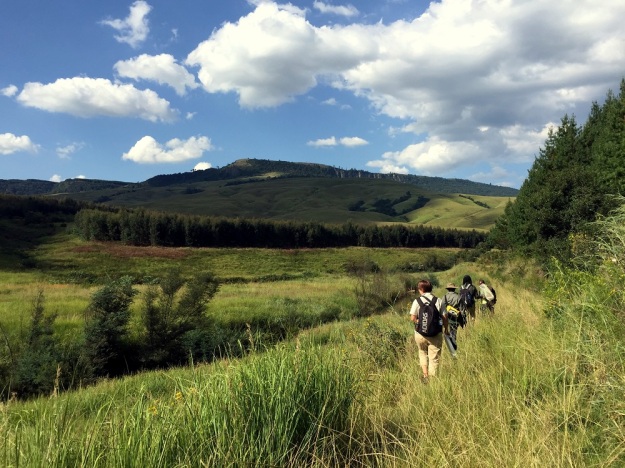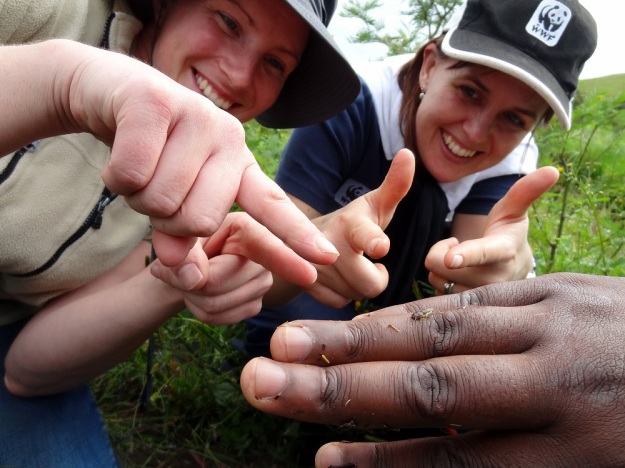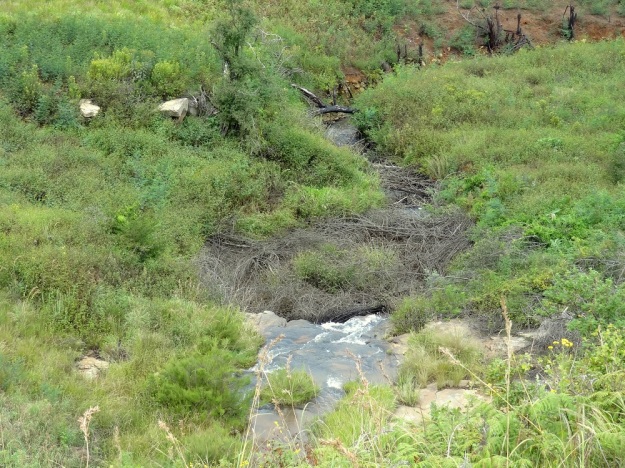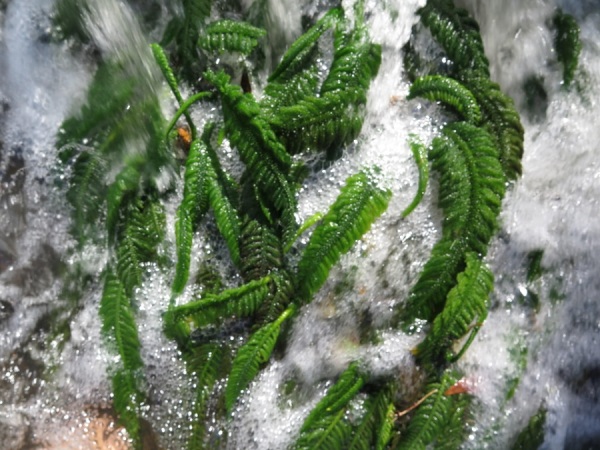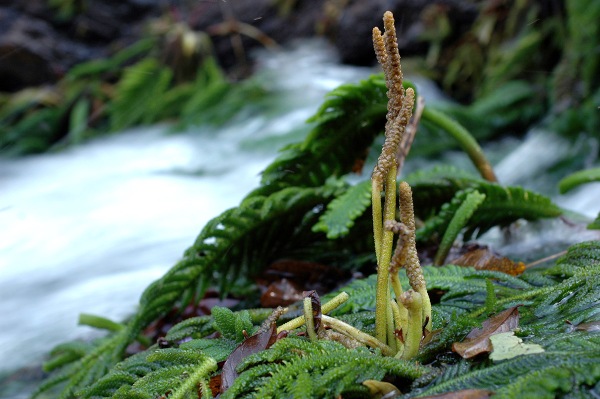
The excitement was brewing as the team were heading to the start of the final leg of the journey along the Karkloof river. This would involve walking the section from below the Karkloof Falls to the confluence where the Karkloof meets the uMngeni River.

Aerial view of the Karkloof Falls
This entire stretch traverses through the Karkloof Safari Spa property, which is an upmarket private game reserve, lodge and spa with restricted access. This day was set to be a little different from the rest, as we were missing half our team (Ndu and Ayanda), however, we were fortunate to be joined by Jenna Taylor of GroundTruth and Dr. Hans Grobler who is the specialist environmental and wildlife conservation advisor to Mr Worner (the landowner).

From left: Jenna Taylor, Dr Hans Grobler and Sue Viljoen.
The highlight of the day was reaching the base of the Karkloof falls (normally only seen from above) via a winding wooden boardwalk built by the Karkloof Spa.

The boardwalk that leads to the base of the Karkloof falls
The team enjoyed the lush mistbelt forest with the many flora treasures within, expansive cliffs that tell an incredible geological story, and the damp spray of the waterfall with misty clouds rising above the falls.

The magnificent Karkloof Falls
In this sacred place where time stands still, and one gets to just soak up the majesty and beauty of one of nature’s natural wonders, no one would guess that we were just 30 minutes from civilisation and the town of Howick.

A team selfie at the base of the Karkloof Falls, which is the starting point for the final leg of our journey. From left: Twané Clarke (Karkloof Conservancy), Jenna Taylor (GroundTruth) and Sue Viljoen (WWF-SA)
Although the team could have stayed at these magnificent falls all day, they knew they had a journey to complete. Once back out of the forested boardwalk section, the valley opened up into savannah with thorn trees and grassland, with a wealth of indigenous species tracking the river’s course through the reserve.

Dierama sp.
A Buffalo stood watching us quietly from behind a large rock at the river. For at least 8km, the Karkloof’s last stretch before the confluence enjoys natural habitats all along its path, which gives the river an opportunity to heal itself of any impacts experienced higher up in the catchment. Water clarity noticeably improved as well as the levels of dissolved oxygen due to the regular riffles, rapids, and general fast flow of this section.

Fast flowing river through a natural area.
It is interesting to note that Lantana camara was absent along the entire stretch of river from the source to the falls, but was prolific throughout the last day’s journey. We could see that work was being done to combat this invasive alien plant, as well as many others.

Dr Grobler taking the water clarity reading at the weir for us. The clarity test tube is a brilliant citizen science tool which can be purchased through GroundTruth.
While taking water sample readings near the confluence, a young Spotted-necked Otter peeked its head out of the water with curiosity to see what we were doing. Spotted-necked Otters require clean, good quality water with clear visibility in order to catch fish. It was an encouraging sign to have this sighting at the end of our journey and certainly a highlight for the team.

Spotted-necked Otter just above the confluence at the end of our 64km journey,
The team were amused to see that hippo also rely on the Karkloof River as home. Have you ever seen a hippo in a natural flowing river in the KZN midlands? A rare sight indeed. We were also treated to sightings of Eland, Giraffe, Zebra, Bushbuck, Warthog and many more game species.

Hippo enjoying the tranquility of the Karkloof Safari Spa
The river walkers were indeed extremely privileged to have experienced the wildlife and scenery at the Karkloof Safari Spa and are very grateful for being afforded access in order to complete the journey and collect the necessary data along the full stretch of the river.

Identifying water invertebrates to obtain a miniSASS score
Very soon after the confluence where the Karkloof river joins onto the uMngeni, we could see the quick deterioration of water quality and the first signs of invasive water weeds on the uMngeni river at Morton’s Drift. Fortunately the Karkloof River is free of aquatic invasive weeds, and will hopefully remain that way.

Mortons Drift. Just below the confluence on the uMngeni River.
The team celebrated the end of the 6 day Karkloof River walk from Catchment to Confluence with sundowners at the top of the Karkloof Falls at the Sappi picnic site, joined by members of the Karkloof Conservancy and WWF staff. A toast was made to the river walk accomplishment and conquering the 64km journey through hill and vale, rain and shine.

Cheers! To a successful journey.
There is keen interest to see the official results of the river health sampling and the video that is being made of the C2C Karkloof River Walk journey, sponsored by Woolworths. Both of these will be shared at an upcoming Karkloof Conservancy event to be announced.
A huge note of thanks to all the sponsors and partners that have contributed in both cash and kind towards this project, and to the landowners who so willingly allowed access to their properties.
So which river is next? And who else is going to raise their hand to get to know the river in their own catchment?

Great to see the Goble family at the end of our journey. The support from landowners has been fantastic. We look forward to sharing the results with them. From left: Ros Lindley, Fuzz Goble and his mum, Carolyn Goble.


